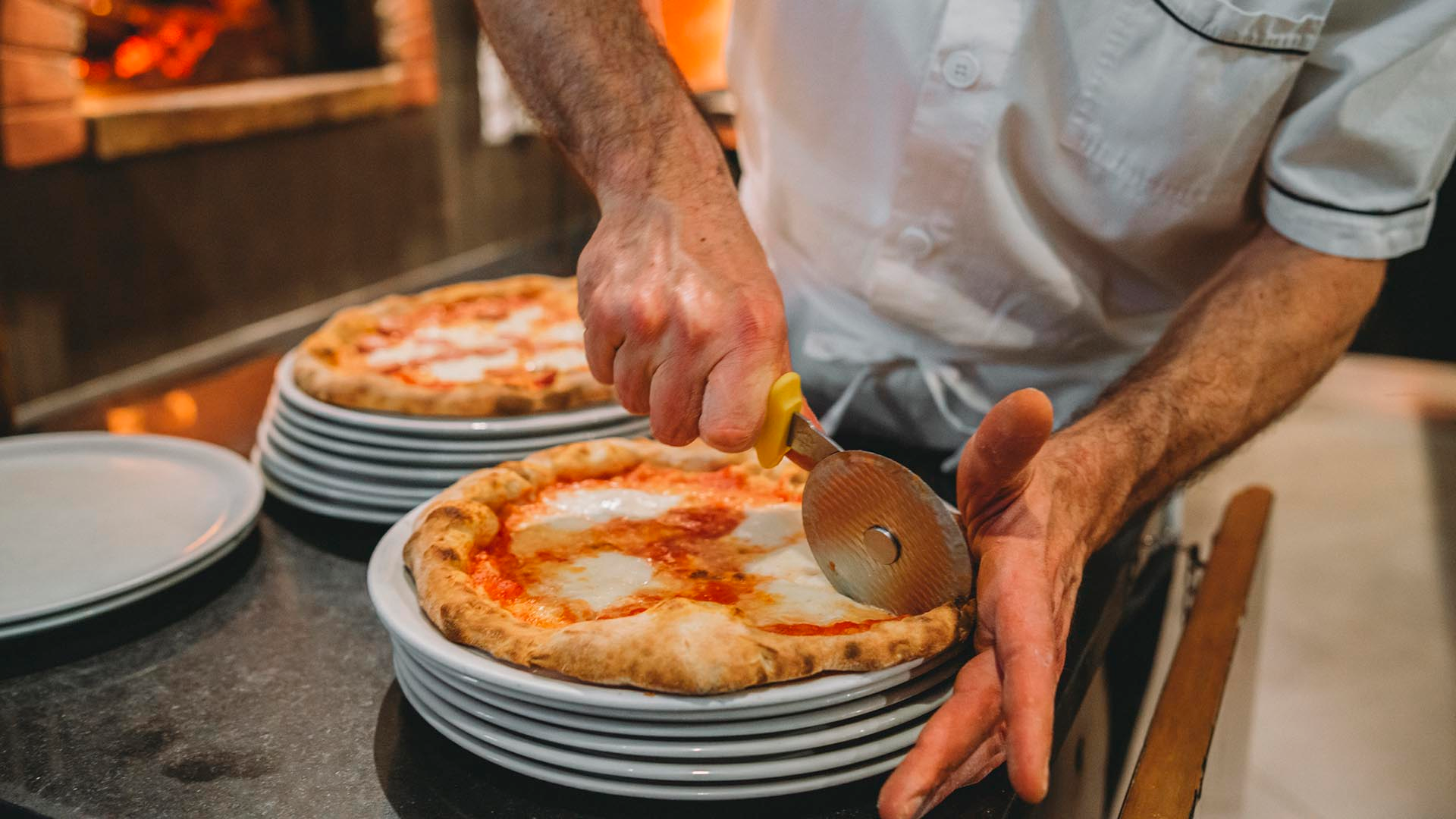What Is Fermented Pizza Dough, And Does It Taste Better?
Modern science has finally been able to explain what professional pizza makers have known for decades: Balls of pizza dough left in a cool place overnight taste better than pizza dough that's been mixed and baked the same day. A more exact understanding of the phenomenon of fermentation has led to a rise in pizzerias advertising how long they ferment their dough—five hours, 10 hours, 72 hours. But what does that actually do to the flavor and texture of the pizza?
"All pizza dough and all bread dough is pretty much fermented, unless you're doing unyeasted or unfermented dough, which very few pizzas are made on," Peter Reinhart, pizza judge and author of Perfect Pan Pizza, tells The Takeout. "The quality of the fermentation is what determines the quality of the dough, assuming you're using good ingredients."
Most pizzerias touting long fermentations use a sourdough starter in their dough, rather than commercial baker's yeast. That starter—referred to by Italian pizzamakers and bakers as a "lievito madre"—is a living collection of yeast and bacteria that ferments dough, adding complex flavors and causing the dough to rise. As with bread baking, pizza makers will mix a sourdough starter with a precise amount of water, flour, and salt, then let the dough initially ferment for a few hours. At that point, they'll divide the dough into individual pizza-dough balls, letting them ferment again in the refrigerator for another period of time. Depending on the pizzeria, that can be anywhere from six hours to 72 hours—even up to five days.
Because sourdough contains yeast and bacteria, both of which are agents of fermentation, the dough becomes imbued with complex flavors produced by both types of microorganisms. The bacteria—which create the lactic and acetic acids so crucial to sourdough flavor—take longer to ferment than yeast does, hence why they need a multi-hour or overnight fermentation.
"If you think about it in terms of beer, wine, cheese, or any fermented food, you're getting this very slow fermentation [from the refrigeration]," Daniel Leader, president of Bread Alone Bakery and author of the new book Living Bread, tells The Takeout. "In a cool fermentation like this, you've slowed down the yeast side of things and the lower notes, the sourdough notes, tend to come out more because there's more acetic than lactic production. That's why you get that deep, deep caramelization, and the sourdough 'tang.'"

During this time, enzymes are also at work, changing the structure of the dough itself. Those enzymes were present, but dormant, in the flour—along with starches and sugars inherent to the flour. Adding water activates the enzymes, which begin breaking apart the starches, unlocking the sugar within.
"The enzymes go into the starch chains like little keys, unlocking nexus points within the starch. As the enzymes go in and release the sugars, the sugars become available not only to our palate so we can taste the sweetness, but to the yeast and bacteria as food. And they become available to the oven for caramelization—starches gelatinize, sugars caramelize. So what's released of the sugars makes more complex flavors and beautiful colors," Reinhart says. "But all these things take time. That's why slow fermentation is better than fast fermentation as a general rule, because it releases these natural sugars and flavors."
But how slow is slow? Some pizza makers have pushed the limits of sourdough fermentation to three days, four days, even five days. At a certain point, though, the law of diminishing returns kicks in.
"I personally don't like doughs over 24 hours, because I find the doughs begin to break down and you make it a more acetic dough," Leader says. "It may have more bite to it, but after 24 hours in my opinion, it loses that nice bubbly crumb and some elasticity."
Reinhart generally agrees: There's no real need for a 5-day pizza dough fermentation, and there could be some downsides.
"The sweet spot for me is about 24-36 hours: You get maximum dough functionality, in that it's still very elastic and springy and yet you still get a maximum of flavor development. So I think that for the most part, it's not necessary to go much longer than that," he says.
If you're making sourdough pizza dough at home, you can experiment with refrigerated fermentation to find your own sweet spot. If you're a discerning diner, you might be able to find pizzerias with long fermentations that produce dough with just the right level of tang, caramelization, and spring. Ultimately though, no matter how long it takes to get there, if the pizza tastes good, that's all that counts.
"Every baker has their own approach to this craft, how they choose to use time and temperature and certain ingredients," Reinhart says. "The one who crafts the best version hopefully wins the public support. Yet there are many ways to get there."
